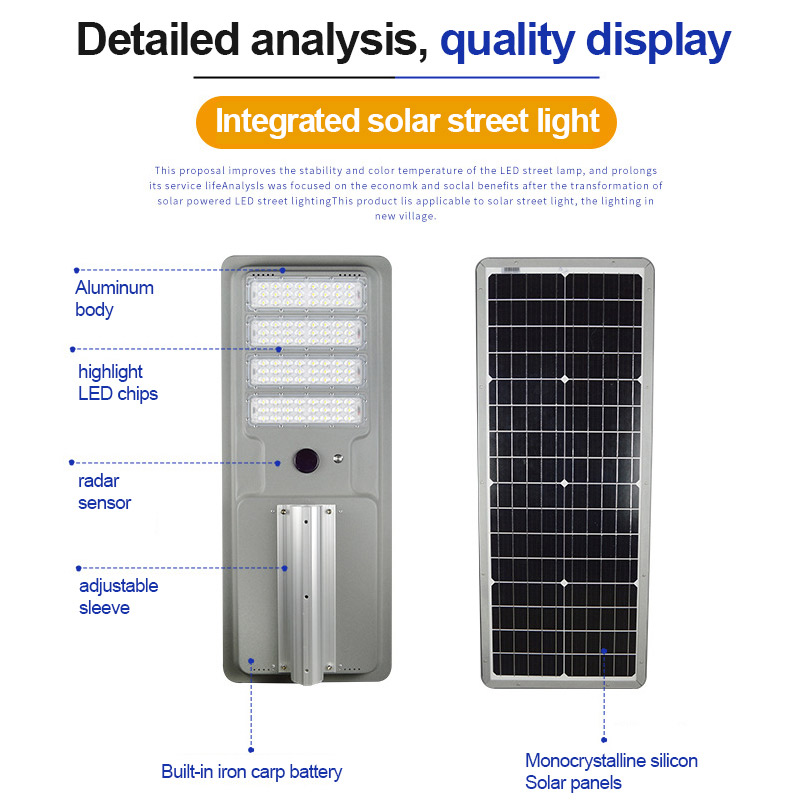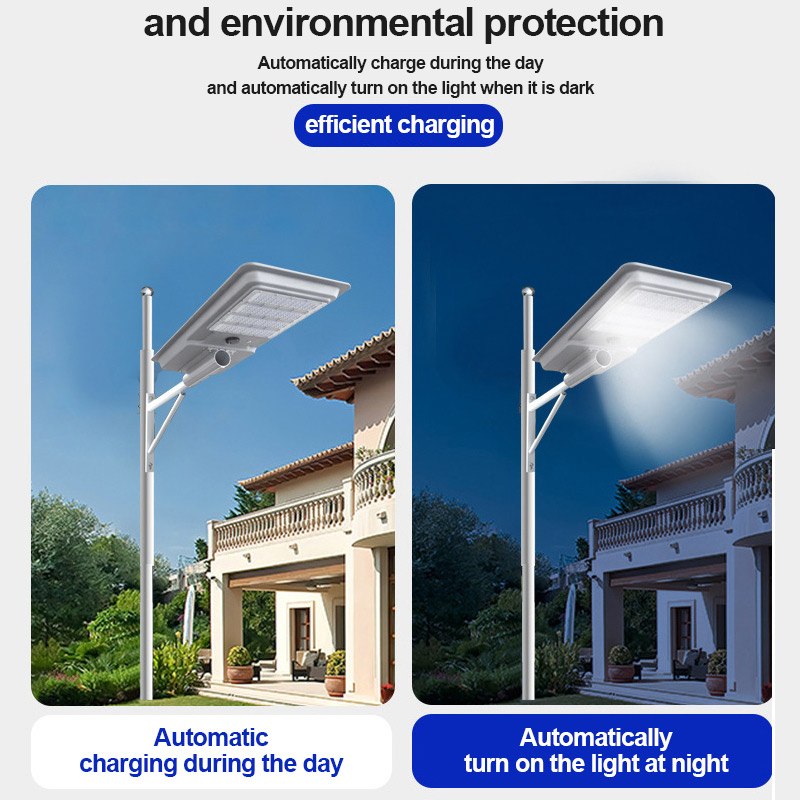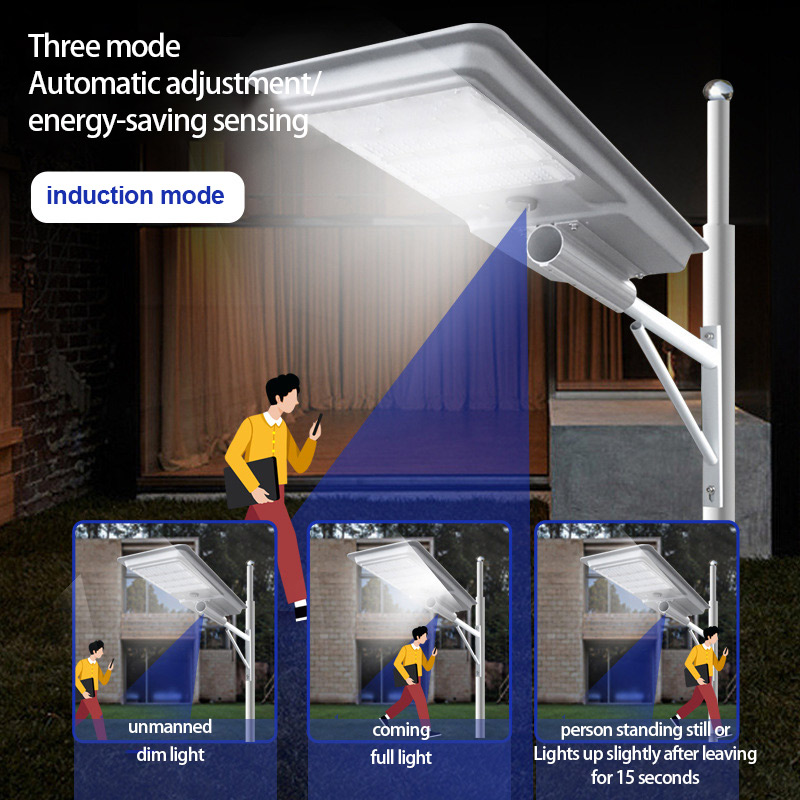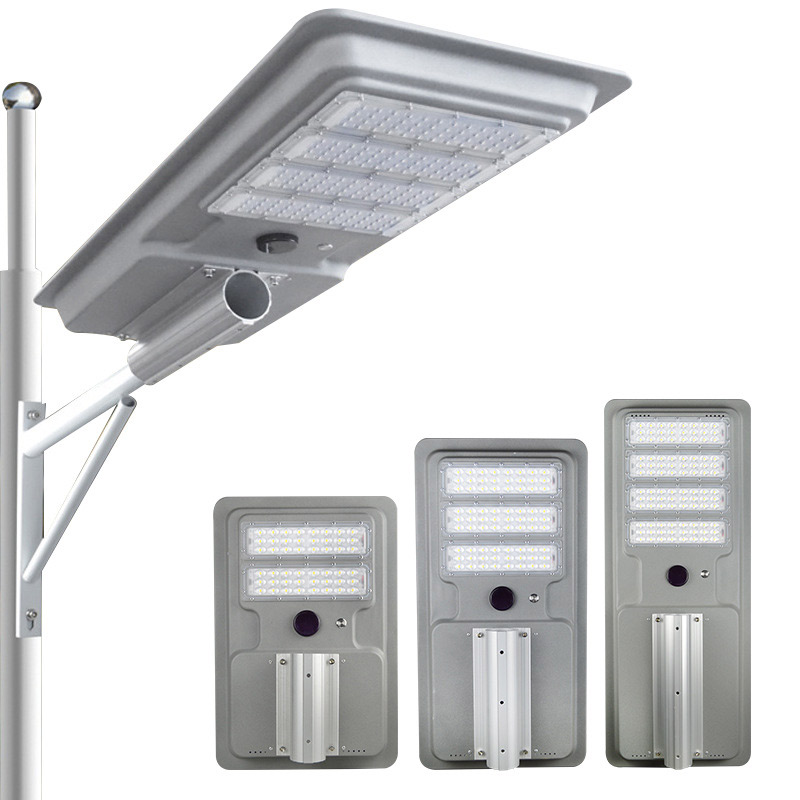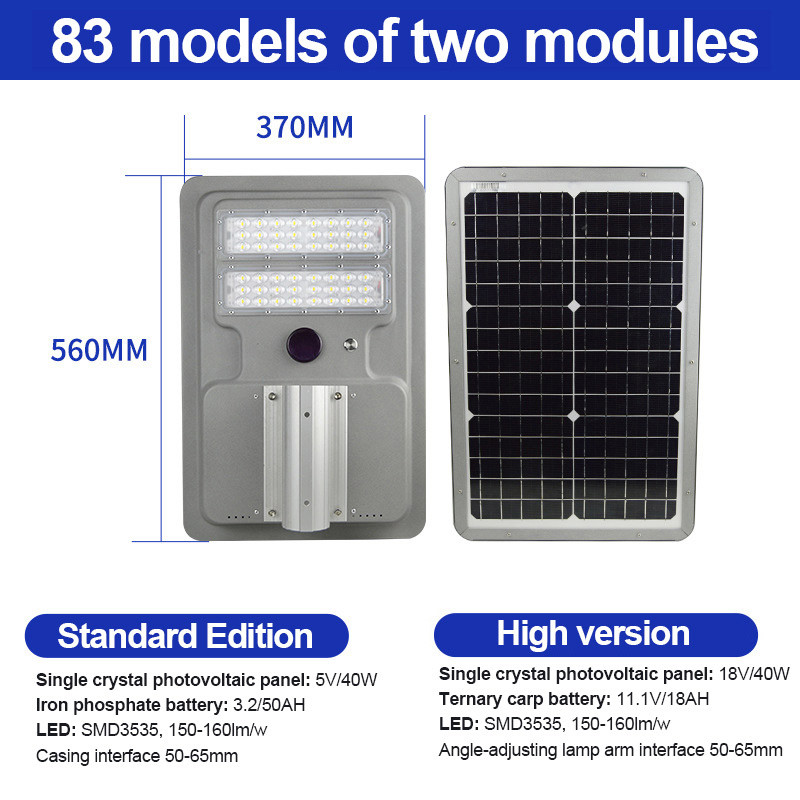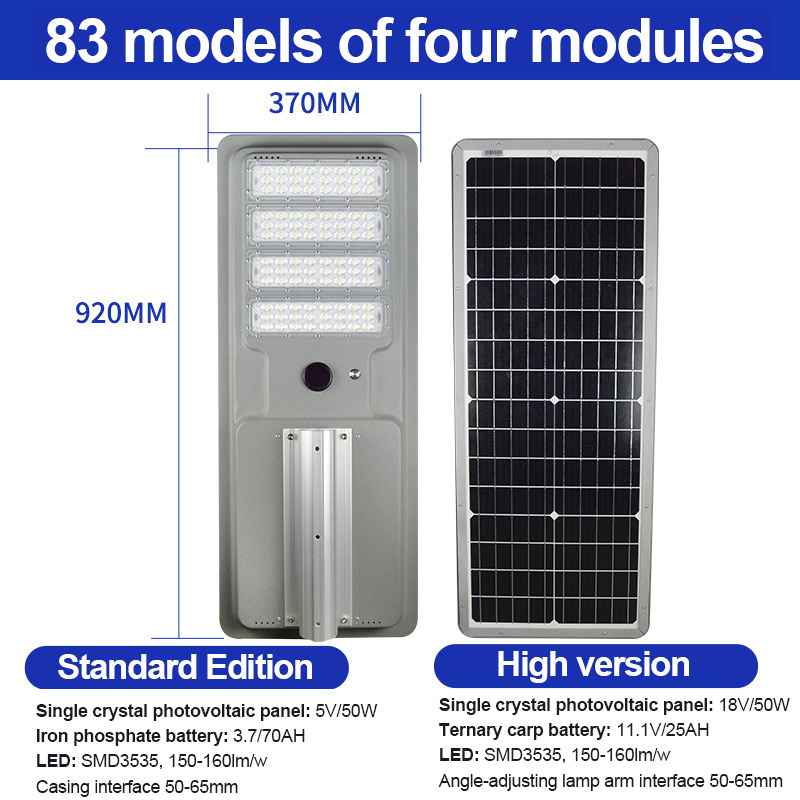Temperatura de color (CCT): 6000 K (alerta de luz diurna)
Clasificación IP: IP65
Ángulo de haz (°): 120
IRC (Ra>): 80
Voltaje de entrada (V): 85-265
Eficiencia luminosa de la lámpara (lm/w): 120
Temperatura de color (CCT): 6000 K (alerta de luz diurna)
Clasificación IP: IP65
Ángulo de haz (°): 120
IRC (Ra>): 80
Voltaje de entrada (V): 85-265
Eficiencia luminosa de la lámpara (lm/w): 120
Marca:
LuxcruzPago:
T/T By bankOrigen del producto:
Zhong shan GuangdongColor:
BLACKTiempo de espera:
30days for 5000pcsProduct description:
1. environmental protection and energy saving: solar street light is using solar energy as energy source. In the daytime, solar panels will convert solar energy into electricity for storage, which can be used by street lights at night, without grid power supply, energy saving and environmental protection.
2. bright and comfortable: solar street light is equipped with high-brightness LED lamps, high illumination, wide irradiation range, high-quality lighting effect.
3. long life: solar street light solar panels and LED lamps are made of high-quality durable materials, with long life, corrosion resistance, weathering resistance, resistance to high and low temperatures and other characteristics.
4. Intelligent control: Solar street light is equipped with intelligent control system, which can realize various control methods such as light control, time control and human body sensor.
Installation mode:
1. Site selection: The site of solar street light should consider the light conditions, avoid shading and ensure that the light can be fully utilized.
2. Installation of solar panels: Solar panels should be installed in a location with sufficient light, easy to clean and maintain, and facing south.
3. Instalación de lámparas: las lámparas suelen instalarse en postes. El poste debe tener suficiente fuerza y estabilidad para soportar el peso de las lámparas y la presión del viento.
4. Cableado: conecte los paneles y las luminarias a través de cables y configure los sistemas de control inteligente según sea necesario.
5. Puesta en marcha de la red: después de la instalación, se debe realizar la puesta en marcha y las pruebas de la red para garantizar que todas las partes del sistema funcionen correctamente y cumplan con los requisitos de funcionamiento.

